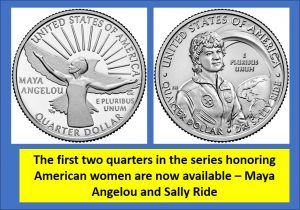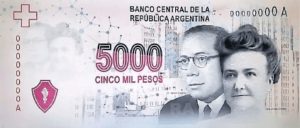 About two years ago, I introduced myself as a numismatist (collector of money) and published three blogs that intersected my hobby with my profession as a diversity, equity and inclusion consultant.
About two years ago, I introduced myself as a numismatist (collector of money) and published three blogs that intersected my hobby with my profession as a diversity, equity and inclusion consultant.
In June, 2020 – “Black Lives Matter and the $20 Bill – an Awful American Travesty,” I recounted the very sad story of how the approved plans to place African-American abolitionist Harriet Tubman on our $20 bill got derailed.
In July, 2020, I followed with – “A Black Lives Matter and an American Coinage Travesty – blog 2,” I recount the sad story of a Ku Klux Klan-inspired coin.
Then in December, 2020 – I connect our nation’s monetary currency to diversity issues: in “Brother, Can You Spare a Dime” I recount how Republicans during the Great Depression attempted to censure this song.
Now I am pleased to share two areas of diversity highlighted in coinage and paper money.
The first is the next set of quarters now being issued in the USA celebrating women. For the past few decades, the United States Mint has issued 5 quarters a year with different reverse sides. For 11 years it was general facts about the 50 states and territories, and then after that, 11 years of Nationals Parks and Monuments. Now in 2022 a new cycle of 20 quarters has begun – celebrating diverse famous women of the USA. This year’s five are:
• Maya Angelou – celebrated writer, performer, and social activist
• Dr. Sally Ride – physicist, astronaut, educator, and first American woman in space
• Wilma Mankiller – first female principal chief of the Cherokee Nation
• Nina Otero-Warren – a leader in New Mexico’s suffrage movement and the first female superintendent of Santa Fe public schools
• Anna May Wong – first Chinese American film star in Hollywood
I already have my first two that are already out. With only men gracing our major coinage and paper money, it is about time to include women on our circulating money.
Second is a cool article in the May, 2022 issue of the Numismatist Magazine titled “Deaf Numismatics” by Kenneth S. Rothschild. The byline of the article is “Members of the deaf community have achieved success in many fields, as currency worldwide attests.”
Too often, people with disabilities have not been fully included in diversity discussions and recognized for overcoming their challenges to achieve great things. Deaf people (and their supportive allies) on worldwide money have included:

Cecilia Grierson, the first woman doctor in Argentina and pioneer for the education of the blind and deaf on their 5,000 peso note.
• Australia’s great story writer Henry Lawson on their first $10 bill
• Famous blind and deaf American Helen Keller on the American 2003 state quarter series
• Blind artist Pinturicchio, who lived in Italy over 600 years ago, on the San Marino two euro coin
• Denmark’s Alexandra, wife of England’s King Edward VII became deaf in later years and is honored on Papau New Guinea’s 100-kina gold coin
• When North Carolina printed its own money during the American Civil War, it was printed at the North Carolina School for the Deaf, and the attribution is included on some the bills.
This comprehensive article includes many more, and I do hope The Numismatist follows up with some additional articles on other segments of the people with disabilities community.


